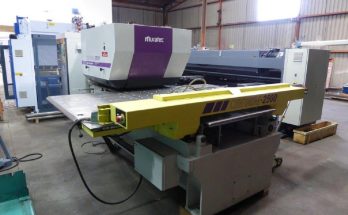If you are a small business owner, it is expected that you have invested a lot of capital in inventory. While your products are considered the main source of revenue and sales, they can tie up much of your cash if you are not using a good inventory management system.
Inventory requires handling, can spoil or go out of style and will require handling. It can also be stolen or lost. Unfortunately, at least 43% of small business owners in the United States still use spreadsheets or pen and paper to track their inventories instead of investing in the right inventory management system.
Unfortunately, manual mishandling of inventory can cause shipping mistakes, data entry errors, and lack of knowledge of what you have (or don’t have) in stock. The combination can be a recipe for potential sales loss and customer dissatisfaction. Below are some of best practices you need to follow when it comes to inventory management:
Determine the type of inventory management that suits your business.
As the business owner, nobody knows your inventory flow better than you do. Would a periodic or continuous review system be best? If you are trying to decide between the two, here are a few facts you need to consider:
- Continuous review system: with this system, you will order the same quantity of items with each of the orders you place. You will need to monitor the inventory levels. When the quantity of a specific item drops below the level you have set, you need to replenish that stock.
- Periodic review system: with this system, you will order products at the same time each period. At the end of the period, you will determine the number of items ordered based on the quantity levels at the end of each period. There is no set reorder levels for the periodic review system.
Manage your inventory accordingly.
Your inventory level will depend primarily on the size and type of business you run. For instance, the number of items that are kept in the warehouse can differ between that of a clothing manufacturer and a fresh food delivery service.
Generally, it is recommended that stock levels are kept low to reduce the cost of operation. Cash flow will also increase since you will not be weighed down by the high cost of maintaining stocks for long periods.
An inventory management system will also help you determine the inventory levels that would be most beneficial to your businesses’ unique flow. With the right inventory management system, you can also track other important data such as sales patterns, past turnovers, seasonality, and more educated business decisions.
Implement Quality Control
Regardless of size, quality control is crucial in any business. That said, it should be implemented as early as possible. Having a process that ensures quality can result in business growth and customer satisfaction. When implementing quality control, ask your staff to examine your products for:
- Signs of damage: broken seals, tears, or leaks
- Product sizes, styles, and colors: must be identical to the description stated in the purchase order
- Terms of sales and prices
If items don’t meet company standards, you can return them to the suppliers. This inventory management practice also helps ensure unnecessary increase in stock levels are prevented and employees will no longer provide inappropriate merchandise to customers.
Optimization Strategies
At the heart of any good inventory management system is the knowledge of what you have in stock and being able to manage it accordingly. When you follow inventory management best practices, you can optimize stock levels to meet ever changing consumer demands and boost efficiency.




